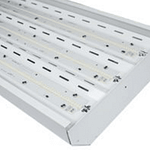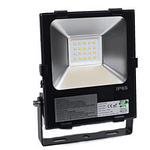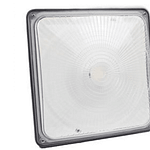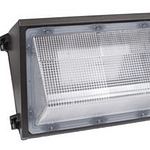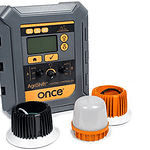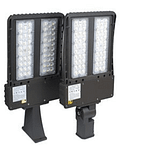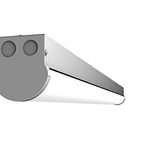Everywhere you go, lighting affects the way you see things. Whether you consciously think about it or not, the color of lights effects our mood. Yellow to orange lighting makes rooms look dark, warm, sometimes even dingy. Bright, white or even blue toned lights make areas look larger, cleaner, and almost clinical. The color your lighting gives off is due to the most prominent parts of the color spectrum your type of bulb uses. Keep reading below to better understand the lighting color spectrum, and why LEDs offer the best range!
The Color Spectrum and the Human Eye
The light we see, often perceived as white, is comprised of a multitude of colors. These different colors of light represent different wavelength frequencies, and our eyes can see wavelengths ranging from 390 to 700 nm. Unlike sunlight, which is comprised of all of the colors you commonly see in a rainbow, most artificial lights are missing sections of the spectrum.
CFL Color Spectrum
A few of the best lights to demonstrate the holes in color spectrum in terms of lighting are CFLs and incandescent lighting. When using incandescent lights, colors in the blue-green family are diminished and hard to see. This makes incandescent lighting inherently warmer in tone. CFL bulbs trick us into seeing a “white” light by creating a mixture of blue, green, violet and orange.
LED Color Spectrum
When compared to traditional lighting, LEDs lend to the bluer end of the color spectrum. Yet, while they pull bluer than other bulbs, LEDs have the most consistent distribution amongst the color spectrum compared to its competitors. While LEDs are known most commonly for their blue/white lights, they come in a variety of color temperatures, from warm hues to cool tones.
Benefits of LED Color Spectrum
So, why is the color spectrum of LEDs better than that of other traditional bulbs? Because it compares very closely to natural sunlight. When you are sitting in an office all day, you crave natural sunlight for a source of energy and alertness. When stuck under incandescent lighting, which runs largely on the red side of the spectrum, we find our focus and alertness decreased and our fatigue increased. Using LEDs, especially in offices and workspaces, can increase your productivity and energy levels, and better your overall mood!
Find the right LEDs today at Sitler’s
Don’t miss out on the sunshine this summer while working; install LED lighting today to bring the sun to you on days you can’t get outside! Call us today at (319)-519-0039 or request a lighting consultation to get started!
Posted in LED Lighting Basics
Tagged blue light, color spectrum, leds vs CFLs, leds vs incandescent, light wavelengths, lighting color, understanding led color spectrum, white light





